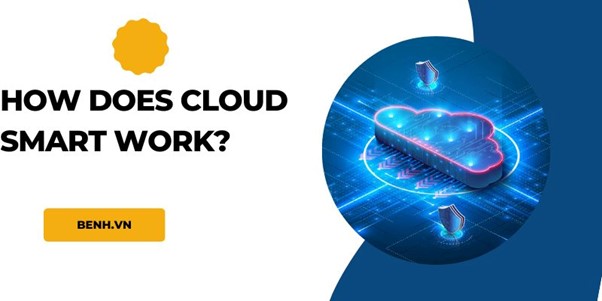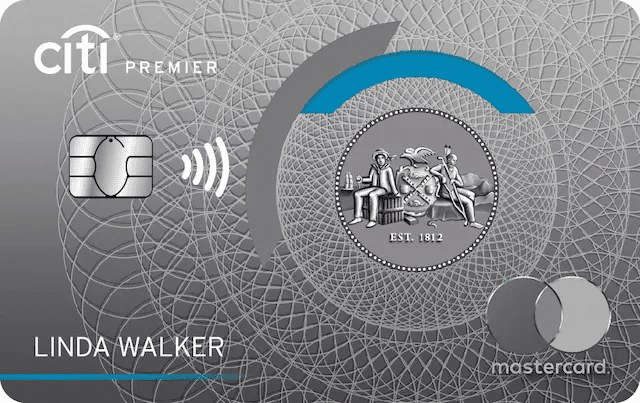Goldman Sachs’s Marcus personal loan, once a prominent player in the consumer lending market, is no longer offered. This unexpected development highlights the volatility in the financial services sector and the importance of understanding loan alternatives. With the rise of AI and alternative credit scoring models in personal loan underwriting, borrowers now have more options than ever. We will explore the reasons behind the closure of Marcus loans and the implications for borrowers seeking alternative lending solutions.
Toc
- 1. Understanding the Former Marcus Personal Loan Offering
- 2. Top Marcus Personal Loan Alternatives for Borrowers with Good Credit
- 3. Navigating the Personal Loan Application Process
- 4. Utilizing Tools and Resources for Informed Decision-Making
- 5. Addressing Specific Concerns and FQAs
- 6. Related articles 02:
- 7. Exploring Debt Consolidation Strategies
- 8. Contact Information and Assistance
- 9. Conclusion
- 10. Related articles 01:
Understanding the Former Marcus Personal Loan Offering

The Marcus personal loan by Goldman Sachs was designed to meet the financial needs of individuals without imposing fees or hidden costs. Before its discontinuation, it was a popular choice for borrowers seeking personal loans for various purposes, such as debt consolidation or home improvements. The no-fee structure and competitive APRs allowed borrowers to save significantly. For example, a borrower with $20,000 in high-interest credit card debt at 18% APR could have consolidated it into a Marcus personal loan at a lower rate, potentially saving hundreds or even thousands of dollars in interest over the loan term. The absence of fees further enhanced these savings.
Here’s a closer look at the key features that made Marcus personal loans attractive:
- Loan Amounts: Borrowers could access loans ranging from $3,500 to $40,000, catering to a variety of financial needs.
- APR Range: The annual percentage rates were competitive, varying between 6.99% to 24.99%, depending on the borrower’s creditworthiness.
- Repayment Terms: Flexibility was a hallmark of the Marcus personal loan, with repayment terms ranging from 36 to 72 months.
- No Fees: One of the standout features was the absence of fees, including origination fees, late payment fees, or prepayment penalties.
- AutoPay Discount: Borrowers could benefit from a 0.25% reduction in their APR by enrolling in AutoPay, making repayment even more manageable.
Marcus Personal Loan Requirements
To qualify for a Marcus personal loan, applicants needed to meet specific eligibility criteria, which included:
- A minimum credit score of 660, with higher scores securing better rates.
- Proof of income through recent pay stubs or tax returns.
- A valid Social Security number or Individual Tax ID.
- A U.S. bank account for loan disbursement and payment facilitation.
Top Marcus Personal Loan Alternatives for Borrowers with Good Credit
With the discontinuation of Marcus personal loans, borrowers with good credit can explore several alternative lenders that offer similar products. Here’s a detailed overview of top contenders:
Capital One Personal Loans
Capital One is a significant player in the personal loan market, providing flexible loan options. They offer both secured and unsecured personal loans, with different eligibility criteria and interest rates. Key features include:
- Loan Amounts: Capital One offers personal loans ranging from $1,000 to $50,000, accommodating various financial needs.
- APR Range: The APR typically falls between 6.99% to 24.99%, mirroring Marcus’s competitive offerings.
- Flexible Repayment Terms: Borrowers can choose repayment terms from 24 to 84 months, providing ample flexibility.
- Application Process: The application process is streamlined, allowing for pre-qualification options that do not affect credit scores.
SoFi Personal Loans
SoFi stands out for its no-fee structure and competitive rates, making it a top choice for many borrowers. Key features include:
- Loan Amounts: SoFi offers personal loans ranging from $5,000 to $100,000, making it suitable for larger financial needs.
- APR Range: Interest rates start at 6.99% and go up to 23.43%, offering competitive options for qualified borrowers.
- Repayment Terms: Borrowers can select terms from 36 to 84 months.
- Unique Features: SoFi provides unemployment protection and career coaching, adding extra value for borrowers. Eligibility requirements include a minimum credit score of 680 and stable income.
Discover Personal Loans
Discover is known for its exceptional customer service and straightforward loan offerings. Key features include:
- Loan Amounts: Personal loans range from $2,500 to $35,000.
- APR Range: Rates typically range from 6.99% to 24.99%.
- Repayment Terms: Borrowers can choose from 36 to 84 months for repayment.
- No Fees: Discover personal loans come with no origination fees, providing a cost-effective option for borrowers.
LendingClub Personal Loans
LendingClub operates on a peer-to-peer lending model, connecting borrowers with investors. This unique model can offer more flexibility in loan options. Key features include:
- Loan Amounts: Loans range from $1,000 to $40,000, catering to various financial needs.
- APR Range: Interest rates can range from 6.95% to 35.89%, depending on the borrower’s credit profile.
- Repayment Terms: Borrowers can select terms from 36 to 60 months.
- Peer-to-Peer Aspect: This model allows for different loan structures and terms based on investor preferences.
Upstart Personal Loans
Upstart targets a younger demographic and utilizes AI to assess creditworthiness, considering factors beyond traditional credit scores. Key features include:
- Loan Amounts: Loans range from $1,000 to $50,000.
- APR Range: Rates typically fall between 7.99% and 35.99%.
- Repayment Terms: Borrowers can choose from 36 to 60 months.
- Focus on Younger Borrowers: Upstart considers education, job history, and other non-traditional factors in its underwriting process.
Comparison Table of Personal Loan Features
| Lender | Loan Amounts | APR Range | Loan Terms | Fees |
|---|---|---|---|---|
| Marcus | $3,500 – $40,000 | 6.99% – 24.99% | 36 – 72 months | None |
| Capital One | $1,000 – $50,000 | 6.99% – 24.99% | 24 – 84 months | None |
| SoFi | $5,000 – $100,000 | 6.99% – 23.43% | 36 – 84 months | None |
| Discover | $2,500 – $35,000 | 6.99% – 24.99% | 36 – 84 months | None |
| LendingClub | $1,000 – $40,000 | 6.95% – 35.89% | 36 – 60 months | Varies |
| Upstart | $1,000 – $50,000 | 7.99% – 35.99% | 36 – 60 months | None |
Applying for a personal loan can seem daunting, but understanding the steps can simplify the process. Here’s a step-by-step guide to help you navigate your Marcus personal loan application or any alternative loan application:
Step 1: Pre-Qualification Options
Many lenders, including Capital One and SoFi, offer pre-qualification options that allow you to check potential loan terms without impacting your credit score. This is a great way to assess your options. Additionally, use online comparison tools to quickly view rates from multiple lenders before submitting multiple applications.
Step 2: Required Documentation
Prepare the necessary documentation for your application, which typically includes:
- Proof of income (recent pay stubs or tax returns).
- A valid government-issued ID.
- Your Social Security number.
- Bank statements to verify financial health.
Step 3: Understanding APR and Its Impact
The Annual Percentage Rate (APR) is a critical factor in determining the total cost of your loan. A lower APR means lower monthly payments and less interest paid over time. Compare APRs among different lenders to find the best deal.
Step 4: Comparing Offers
After submitting your application, you may receive offers from multiple lenders. Take the time to compare these offers, considering not only the APR but also the loan terms, repayment flexibility, and any associated fees.
Step 5: Finalizing the Application
Once you’ve chosen a lender, finalize your application by accepting the loan offer and completing any remaining paperwork. This step often involves verifying your identity and income.
Utilizing Tools and Resources for Informed Decision-Making
In today’s digital age, several tools can assist you in making informed decisions about personal loans, including the Marcus personal loan calculator. Using a personal loan calculator is straightforward. Input the loan amount, interest rate, and repayment term, and the calculator will provide insights into your monthly payments and total interest costs. This tool is invaluable for budgeting and ensuring the loan aligns with your financial capabilities.
Importance of Checking Credit Scores
Before applying for a loan, check your credit score to understand where you stand. A higher credit score can unlock better loan terms and lower interest rates. Many credit card companies and banks offer free credit score monitoring services that can be valuable in your preparation.
Resources for Improving Credit Scores
If your credit score isn’t where you’d like it to be, consider utilizing resources that offer tips for improvement. Strategies may include paying down existing debt, making timely payments, and disputing any inaccuracies on your credit report.
Financial Literacy Resources
Educating yourself about personal finance can significantly impact your financial health. Consider exploring reputable financial literacy websites and tools that provide valuable information on budgeting, debt management, and loan options.
Addressing Specific Concerns and FQAs
Potential borrowers often have questions and concerns about personal loans. Here are some common inquiries addressed:
What to Do If Denied a Loan
If you are denied a loan, don’t be discouraged. Review the reasons for denial and consider taking steps to improve your creditworthiness. You may also explore alternative lenders who might have different criteria. While Marcus loans were competitive, other lenders might offer similar or better rates for certain borrowers with exceptional credit profiles.
4. https://phucsonglong.com/mmoga-credit-union-home-equity-loan-your-guide-to-lower-rates/
Understanding Different Loan Terms
Familiarize yourself with common loan terms, such as secured vs. unsecured loans, fixed vs. variable interest rates, and repayment terms. Understanding these terms will help you make informed decisions.
Strategies for Managing Debt Responsibly
Managing debt effectively is crucial for maintaining financial health. Consider creating a budget, prioritizing high-interest debts, and exploring consolidation options if necessary.
Importance of Reading the Fine Print
Before signing any loan agreement, ensure you read the fine print. Understand the terms, fees, and any potential penalties associated with your loan. This step is vital for avoiding surprises down the road.
Exploring Debt Consolidation Strategies
Debt consolidation can be an effective method for managing multiple debts by combining them into a single loan with a lower interest rate. This can simplify payments and potentially reduce overall interest costs. Here are some strategies to consider:
Benefits of Debt Consolidation
- Simplified Payment Process: By consolidating multiple debts into one loan, borrowers can streamline their monthly payments into a single payment, making budgeting easier.
- Potential for Lower Interest Rates: If you qualify for a lower interest rate through a personal loan, it can save you money on interest payments compared to your existing debts.
- Improved Cash Flow Management: Consolidation can help improve your cash flow, allowing you to allocate funds toward savings or other essential expenses.
Drawbacks of Debt Consolidation
While debt consolidation can be beneficial, it may not be suitable for everyone. Borrowers should carefully evaluate their financial situation and goals before pursuing it. Some drawbacks include:
- Risk of Accumulating More Debt: If spending habits do not change, borrowers may find themselves accumulating more debt after consolidation.
- Fees and Penalties: Some loans may come with fees, such as origination fees or penalties for early repayment, which can negate some of the benefits of consolidation.
- Impact on Credit Scores: If existing debts are not paid off promptly, it can negatively impact credit scores, especially if new debts are accrued.
Choosing the Right Debt Consolidation Strategy
When considering debt consolidation, borrowers should evaluate their financial situation and choose a strategy that aligns with their goals. This may involve negotiating with creditors for better terms or exploring different loan products to find the best fit.
Contact Information and Assistance
For those needing further assistance, it’s essential to know where to turn. While the Marcus personal loan is no longer available, many lenders offer support through customer service channels. Borrowers can typically reach out via phone or online chat to inquire about loan options, application processes, and any specific concerns they may have.
Marcus Personal Loan Phone Number
Although Marcus personal loans are discontinued, previous customers can reach out to Goldman Sachs for support. The general customer service phone number is available for inquiries related to existing loans or account management. It’s advisable to keep this number handy for any future needs.
Conclusion
Choosing a personal loan requires careful consideration of your financial situation and available options. With the discontinuation of the Marcus personal loan, it’s crucial for potential borrowers to explore alternatives such as Capital One, SoFi, and Discover. By understanding loan features, eligibility requirements, and utilizing available resources, borrowers can make informed decisions that align with their financial goals. Remember to assess rates, terms, and fees before applying for any loan to ensure it meets your needs effectively. Start comparing loan offers from the lenders discussed to find the best fit for your financial journey!
By taking the time to research and understand the available options, you can navigate the lending landscape confidently and find a personal loan that supports your financial aspirations.
5. https://phucsonglong.com/mmoga-credit-union-home-equity-loan-your-guide-to-lower-rates/










